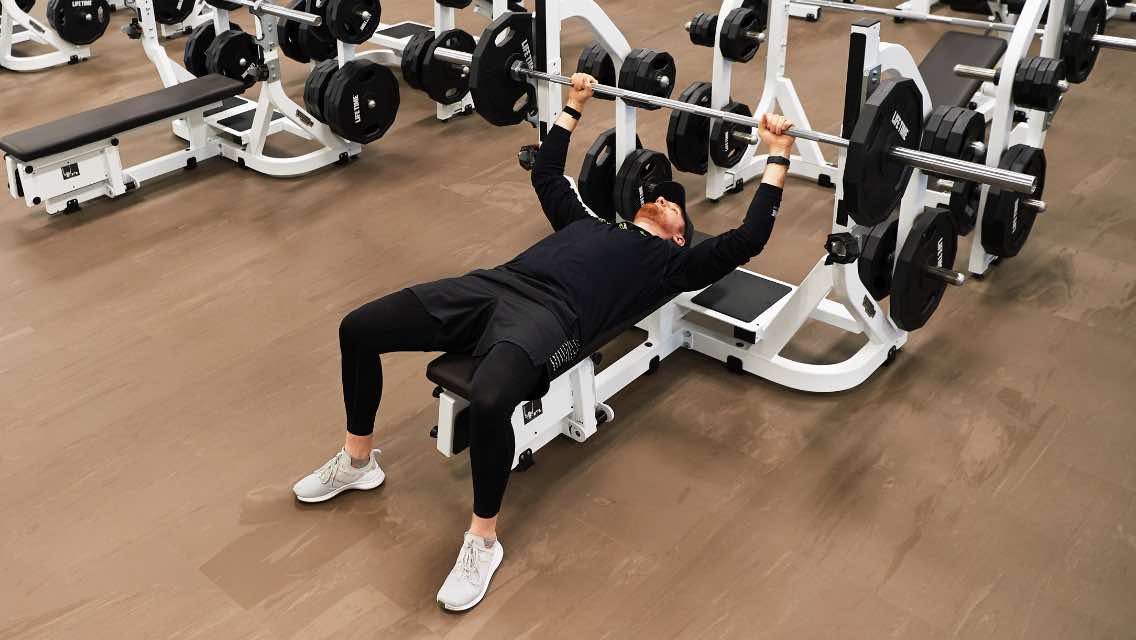Over time, it’s natural to go through periods where your exercise regimen changes. Sometimes you might move less, sometimes you might move more, and other times you may adjust your workouts based on the tools or time you have available.
No matter where you currently fall on the spectrum, if this is a time when you’re feeling inspired to take new steps toward improved health and well-being and to try new things, to protect your body and set yourself up for success, you’ll want to ease into a routine. To help you get going, we asked four Master Trainers from Life Time for their best advice about starting to work out again. Here’s what they had to say.
Anika Christ, RD, CPT
Plan ahead. Spend time mapping out what your fitness plan will look like for the upcoming week: What days will you lift? When will you do cardio? Are there any group fitness classes you want to reserve a spot in? Taking the time to create a plan you can track against increases the likelihood you’ll stick with it.
Have an open mind — and a plan B. Try something new or try not to stress if you have to adjust your routine once you get to the club. For example, have a backup workout in mind in the case the equipment you want to use isn’t available.
If you’re not comfortable with all the equipment on the fitness floor, now is a great time to take advantage of a complimentary orientation with a fitness professional.
Prioritize your warm-up. This pre-workout portion is usually hit-or-miss with many people, especially if time is limited — they just want to get in and out. But it’s important to spend at least a few minutes moving your body and getting your heart rate up before you do any major movements or strength training. Try doing a few reps of movement prep as your warm-up, such as a set of bodyweight squats before you squat a barbell with weight on your back.
Samantha McKinney, RD, CPT
Let consistency reign over intensity. Changes in routine are mostly mental. Focus first and foremost on getting back into the swing of things, putting minimal pressure on yourself to “perform.” Decide how many days per week you’re going to exercise, and then do it — even if it’s only 10 to 15 minutes or four to five sets.
Something is better than nothing. We’re creatures of habit, so if you can get yourself into the routine first, you can then build the intensity over time.
Freshen up your playlist. Has your workout playlist gone untouched for the past few months? Select at least 10 uplifting songs you know will help get you in a headspace that’s ready to move and sweat.
Prioritize strength training if you have limited time. Figuring out how to start working out when it hasn’t been part of your routine can be tricky, so do what you can with the time you have. Think 12 to 15 repetitions of a movement for two to three sets. Use this time to reengage with kettlebells, barbells, and other equipment you may not have access to at home.
The benefits of strength training completely depend on whether or not they are done correctly, so if you’re not confident in your form, connect with a trainer for guidance.
Paul Kriegler, RD, CPT
Ease back into your routine. Do this by focusing on your breathing, form, and control of movements you haven’t done in a while. For example, if it’s been several weeks since you’ve done barbell movements, approach your first session with reduced loads and renewed attention to technique. Use this time as an opportunity to build strong skills, not just strong muscles.
Train your mind for resilience by (re)starting a yoga practice. Our on-demand and live streaming yoga classes are great to take advantage of from home, but practicing with an instructor who can give you verbal cues will improve your physical ability to perform the moves. Plus, the social atmosphere is sure to be a highlight of your day.
Keep striving for optimal sleep. Ideally, this is seven to nine hours every night. Sleep is the ultimate daily reset button for your mental, physical, and immune health.
David Freeman, CPT, PES
Create structure at the start of your week. Develop a scorecard for each week that’s filled with actionable items to follow. At the end of the week, review how you did, and use it to inform your plan for the next week. Accountability breeds responsibility — at the end of the day, you are the owner of your results.
Speak to your “why.” We often focus on our short-term feelings. Instead dive into your purpose — or the “why” behind your overall health and fitness goals. You’ll discover a deeper meaning and connection to what you’re trying to achieve.
Once you identify your “why,” write it down, and share it with someone. Studies show when you write something down, you’re two times more likely to do it, and if you share it, that increases to three times.
Keep your mind right and your body right. Mental health leads to physical health and understanding that the way you think leads to the actions you take can be a powerful tool.
Having a positive mindset in times of uncertainty is difficult — and developing a strong mindset takes time and patience. Creating a positive ecosystem that enables you in this area is key. Find a community that offers you support and positivity, such as those in yoga classes, small group training, or community outreach options.





